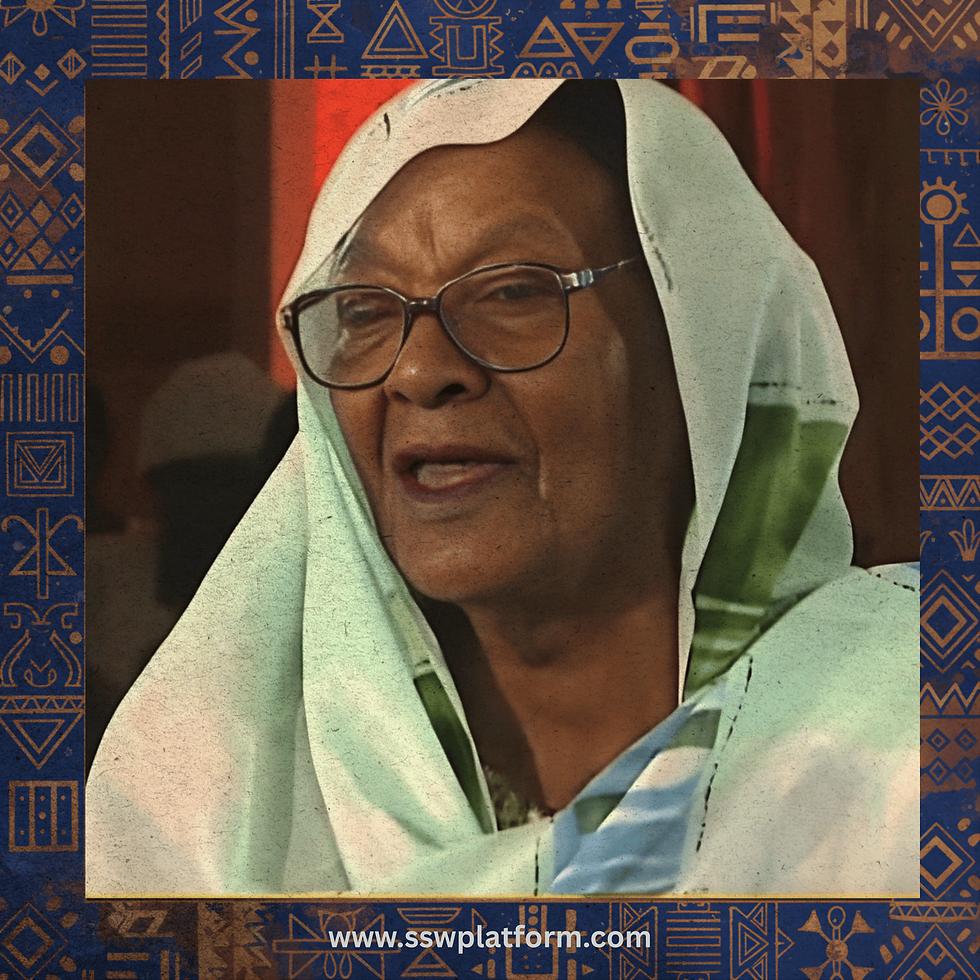Hawa Al-Tagtaga: The Revolution Wrapped in a Thobe
- Samia Elgallabi

- 7 days ago
- 2 min read

إليك صياغة سردية حماسية لقصة أيقونة الاستقلال حواء "الطقطاقة" (حواء جاه الرسول)، بأسلوب يبرز دورها كصوت للثورة ورمز للهوية الوطنية.
Title: Hawa Al-Tagtaga: The Revolution Wrapped in a Thobe
(العنوان: حواء الطقطاقة: الثورة المتدثرة بالثوب)
In the history of nations, some figures do not just witness history; they wear it. Hawa Jah Al-Rasool, known to the world as "Hawa Al-Tagtaga," was not merely a folk singer. She was the beating drum of Sudan's independence, a woman who turned her vocal cords into a weapon against colonialism.
A Walking Flag When the British colonizers banned the raising of the Sudanese flag, attempting to stifle the dream of independence, Hawa did something audacious. She did not just carry the flag; she wore it. She stitched a Thobe in the colors of the independence flag (Blue, Yellow, and Green) and walked through the streets of Khartoum. She turned her own body into a walking banner of defiance, daring the authorities to arrest a woman for her clothing. In doing so, she proved that patriotism is a skin you cannot shed.
The Voice of the Barracks and the Streets Hawa’s voice was not trained in conservatories; it was forged in the heat of protests and the dust of army camps. She was the "Singer of the Army," boosting the morale of soldiers and civilians alike. Her songs were not just entertainment; they were political editorials chanted by the masses. She possessed a charisma that could silence a crowd or incite a revolution with a single note.
The Grandmother of Independence On the historic day of January 1st, 1956, when the Sudanese flag was finally hoisted officially, Hawa was there, leading the cheers. She remains the eternal image of that moment. She taught us that a woman’s place is at the forefront of the national struggle. She was loud, she was fearless, and she was unapologetically Sudanese.
A Legacy of Strength Hawa Al-Tagtaga passed away, but her spirit remains in every woman who refuses to be silenced. She is the reminder that art without a cause is just noise, but art with a cause is history.










Comments